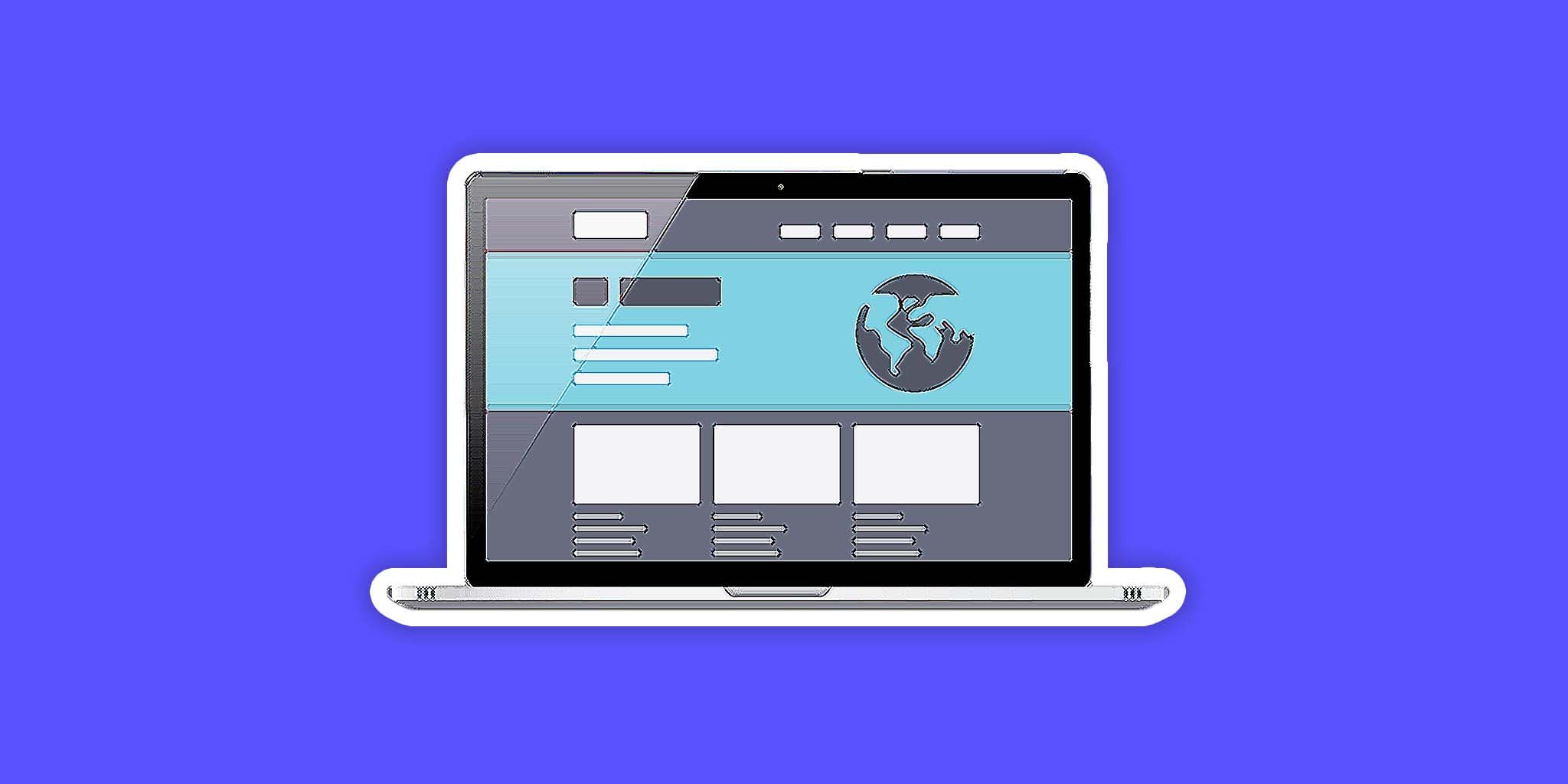
11 Things You Need On Your Agency Website To Improve Conversions
Here are 11 things you need on your agency website:
- Clear value proposition
- How it works section
- Social proof
- Service page
- Resource centre
- Pricing
- About us
- Work samples
- Call to action
- Terms of service
- Client portal
One of the best ways to increase your agency sales is simply to improve your company website.
A website that
communicates clearly your value proposition, builds trusts with prospects, and captures leads effectively is a key
component of your agency's marketing
strategy.
A better website = more conversions = more revenue.
In this post, we have listed 11
essential things you need on your website.
Let's get started!
1. Clear value proposition
The most important part of your website is to communicate clearly your value
proposition.
This means:
- What you offer
- For whom
The best way to come up with a clear value proposition for your agency is to talk to your existing clients.
Pay attention to the words they choose to describe your solution and use those those words in your marketing
copy.
A good way to know if you have a good value proposition is to use this framework : "We help
[Customer] solve [Problem] by doing [Solution]"
In the example below from TestimonialHero their value proposition is "We help B2B revenue
teams close deals 40% faster with stunning testimonial videos"
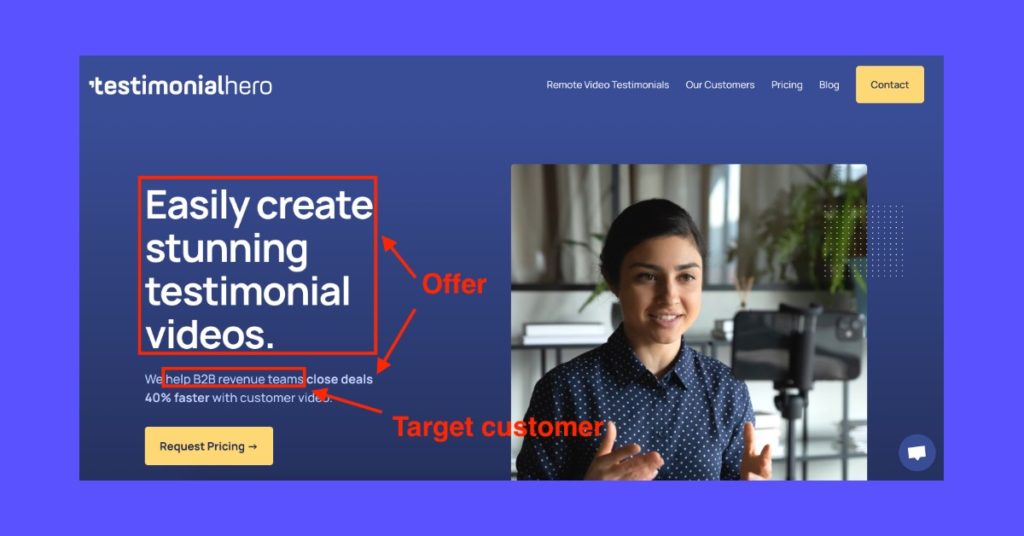
One thing worth noticing is that they used facts "closing deals 40% faster" in their copy which is really appealing for prospective customers.
2. How it works
The best way to explain how your solution works it to talk about the problem that you are solving
for your clients.
Explain why you clients should care about having that problem solved and show how your
agency's services are best positioned to solve it.
Here's an example from CoverDesk, a virtual assistant service for insurance firms:
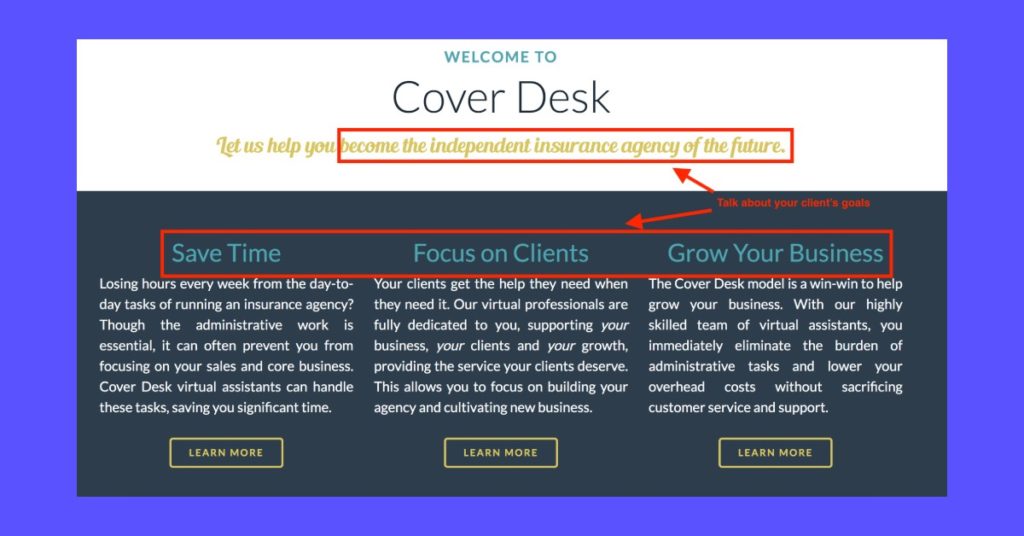
They laid down a few problems that insurance companies face:
- Losing hours every week with day-to-day task
- Eliminate the burden of administrative tasks
And positioned their service as a solution that can help them:
- Save time
- Focus on clients
- Grow your business
It's only after they laid down what they can help the clients achieve that they explained why they should choose their service:
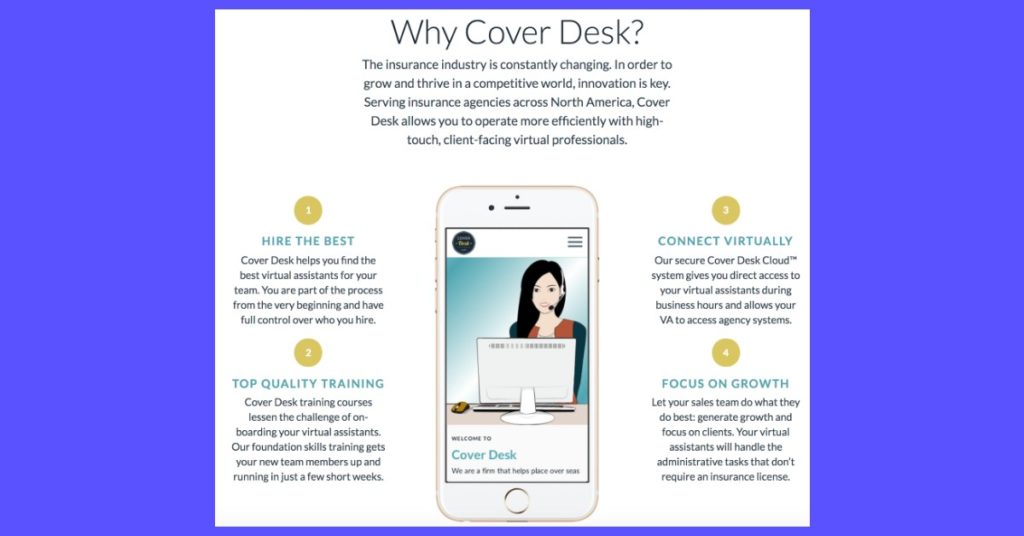
A good framework to follow for your "How it works" copy is the Problem --> Solution -->
Features.
For example:
- Problem (Losing hours during admin tasks)
- Solution (On-demand virtual assistants)
- Features (Hire the best, Top quality training, Connect virtually)
3. Social proof
Social proof is key to build trust with
your prospective clients.
Here are some tips:
- Add numbers and facts
- Show how you've helped clients achieve their goals (revenue increase, time savings)
- Add pictures of your clients
- Add a link to a detailed case study
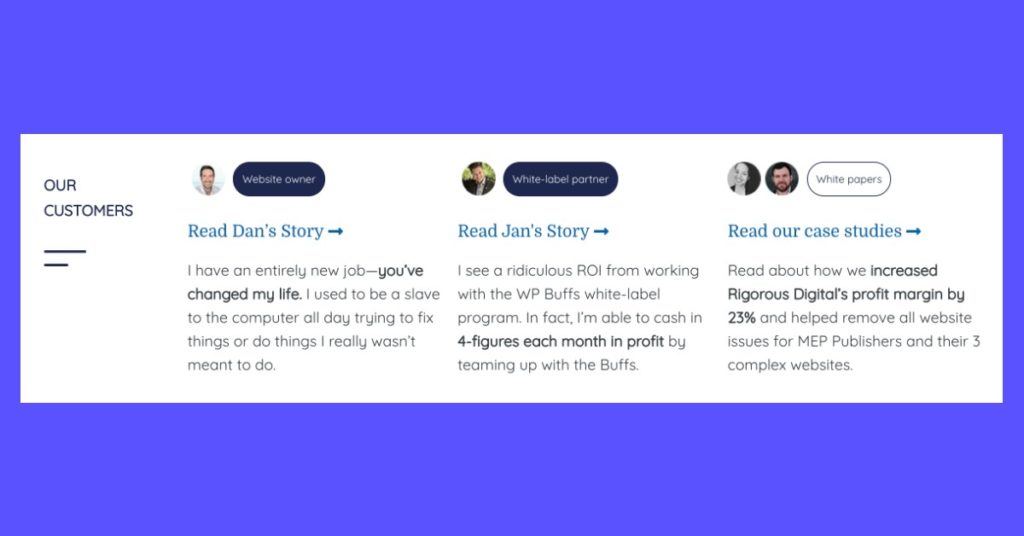
4. Service page
Another important section of your website is your service page.
The goal of your service page is to tell who your service is for and to set expectations with your future clients.
If you set expectations properly, you'll have more satisfied clients since they will know exactly what they sign up for.
For example, you could add:
- What's included and not included in your service
- Who your service is for / not for
- Frequently asked questions
- Create subpages for each service for SEO
Here is an example from Outshinery, a photography service specialized in wine bottle photography:
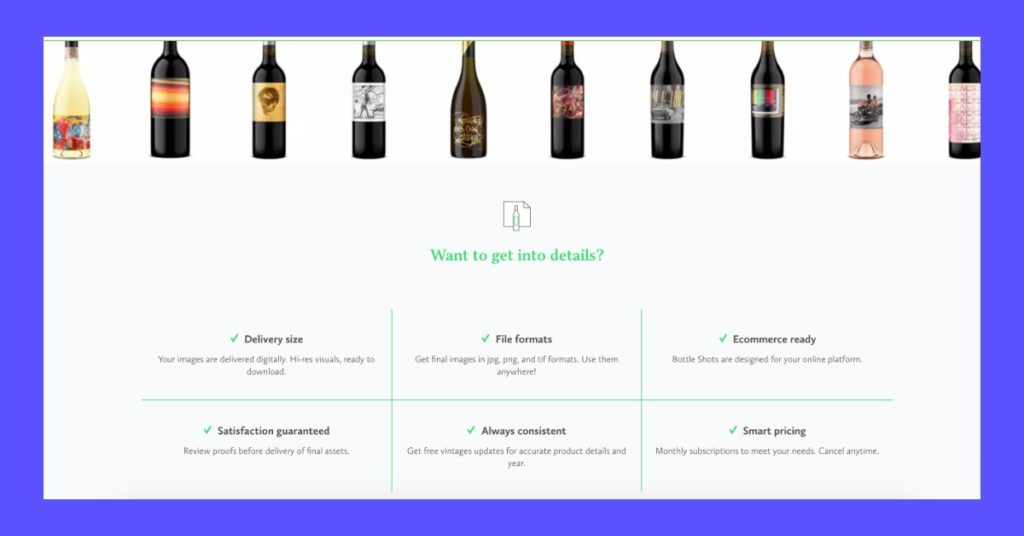
They created pages for each service they provide, along with examples of their work and what is included for each
service.
They also added a FAQ as well as a CTA to their pricing page on each service page.
5. Resource centre
Another useful section you can add on your website is a resource centre.
Your resource centre will
educate your prospective clients about the needs for your service.
Here's an example from DesignPickle, an on-demand design service:
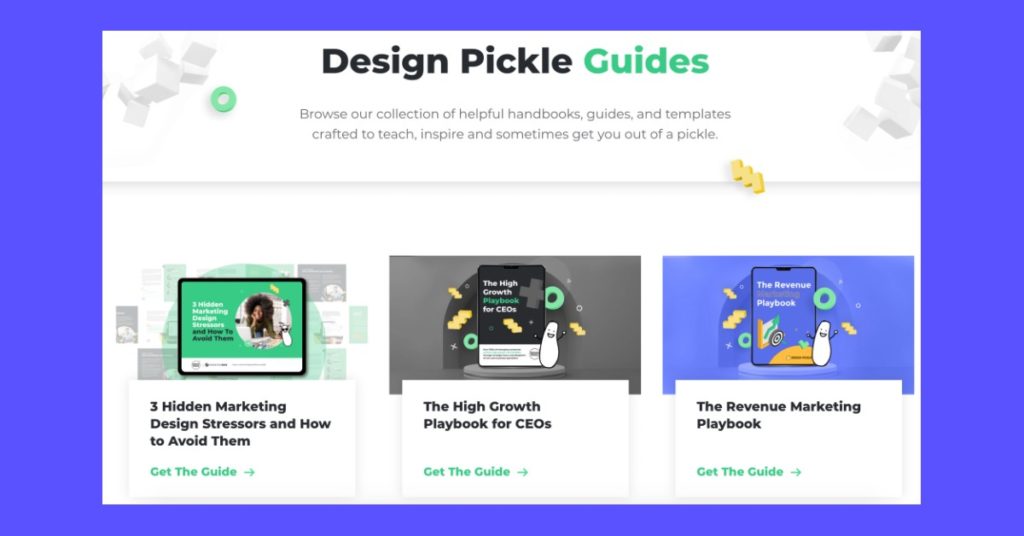
Here are some ideas of what you could include in your resource centre:
- Knowledge base
- Best practices / inspiration
- Guides
- Tools (for example, DesignPickle created a "graphic design calculator")
Your resource centre is also an opportunity to collect emails and nurture leads into clients.
6. Pricing
Finally your pricing page is another very important section of your website.
One way to improve it is to
package and productize your
services.
That way, there are no proposals: Clients simply purchase your services as if they would
purchase a product off the shelf.
And you also get paid upfront!
Here's an example from VideoHusky, a video editing service:
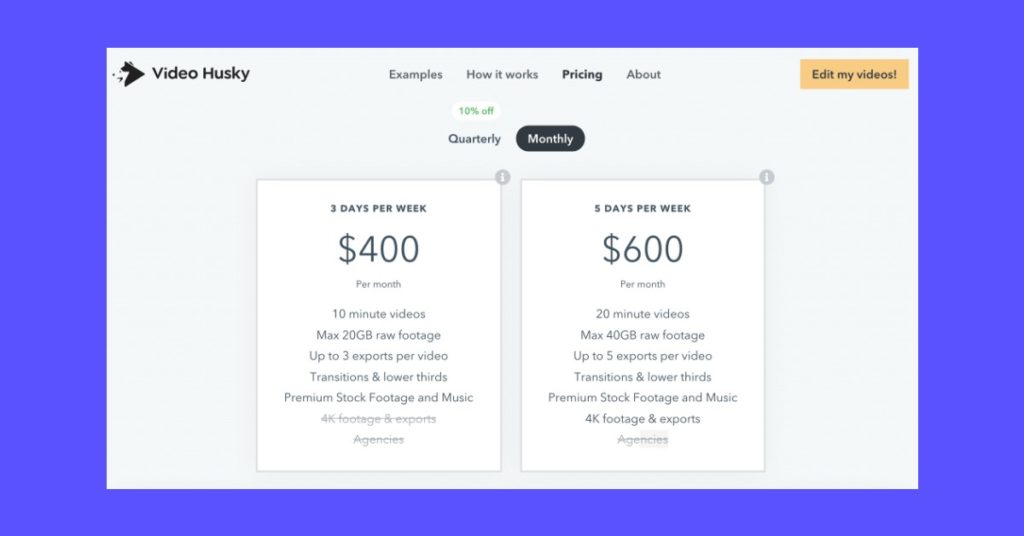
- Mention which plan is best suited for which use case / type of customer
- You can also add more social proof to convince prospective clients
- You can also add a FAQ on your pricing page
7. About us page
Another section you could add is more info about your team and company, such as:
- Why you launched that company and your mission
- Story and milestones
- Team pictures
Here's again an example from VideoHusky:
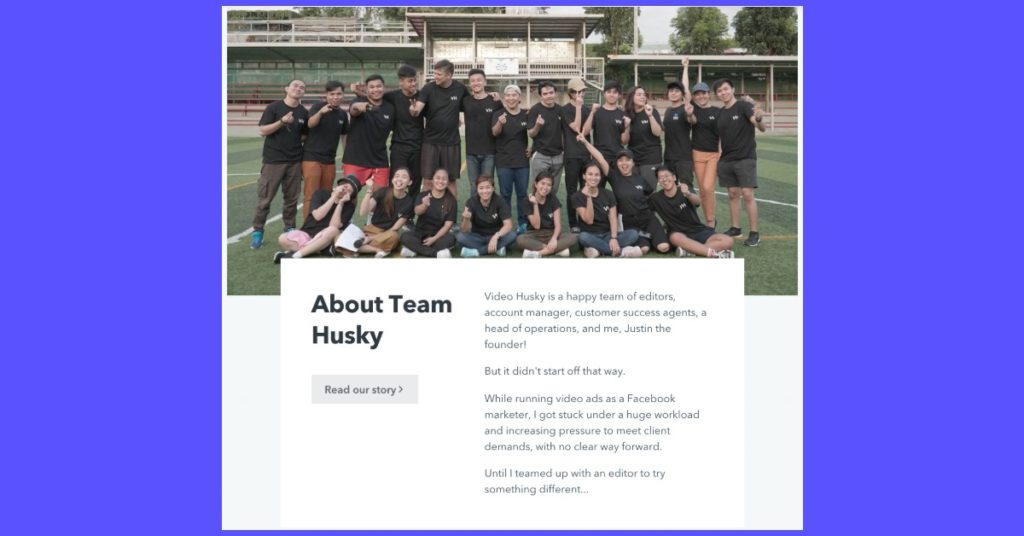
8. Examples of your work
The best way to convince prospective clients is simply to let your work speaks for itself.
Add examples of
your prior work.
Here's an example from SaaSpirin, a content
marketing service for B2B companies:
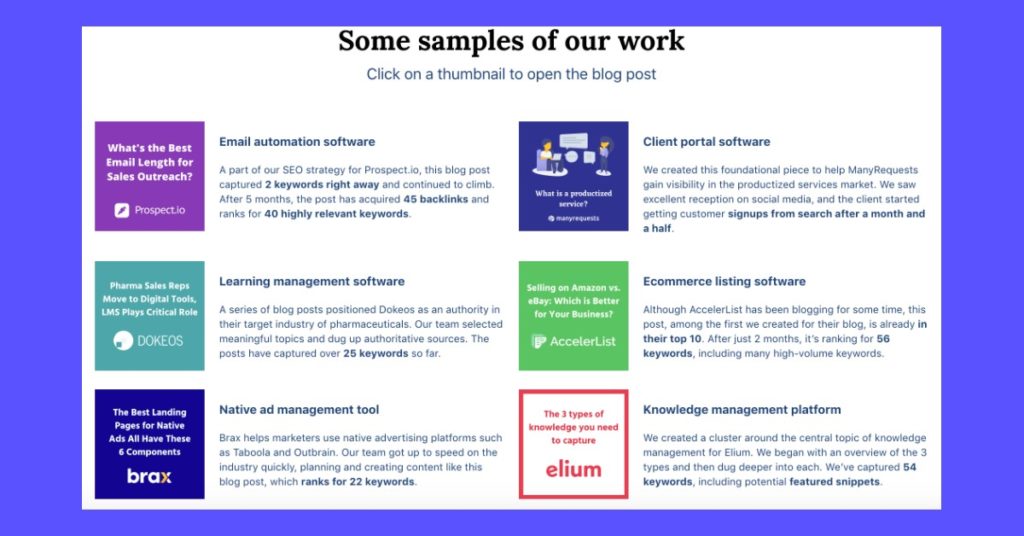
9. Call to action (CTA)
Another important thing to add on your agency website is a call to action.
You could use a foot in the door offer (for example, a free trial or
free consultation) to get customers to take action once they're on your website.
Here's an example from Hatchly, an on-demand design service in the UK:
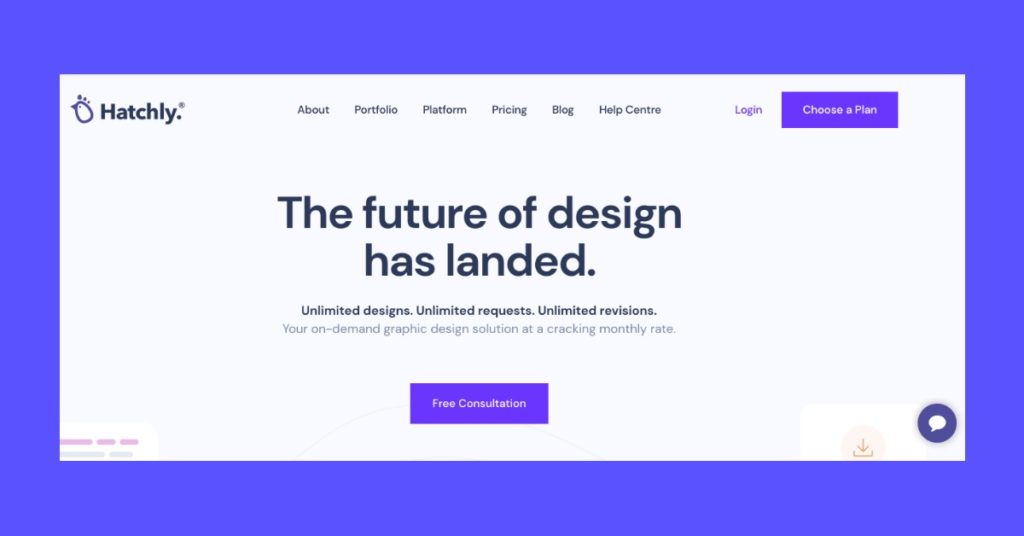
10. Terms of service
While this does not sound like the most exciting part to add to your website, this is still very important to build
trust.
Add terms of service, GDPR terms, as well as a privacy policy on your website.
11. Client portal
Finally, having a link to your client portal on your website is a great way to have one single source of truth to
communicate with your agency clients.
ManyRequests (our software),
is a great option for that.
Here are several things you can do with a client portal:
- Client onboarding
- File sharing
- Billing and invoicing
- Communication and tasks
- Automations

Running an agency?
ManyRequests is an all-in-one client portal and client requests management software.
Learn more